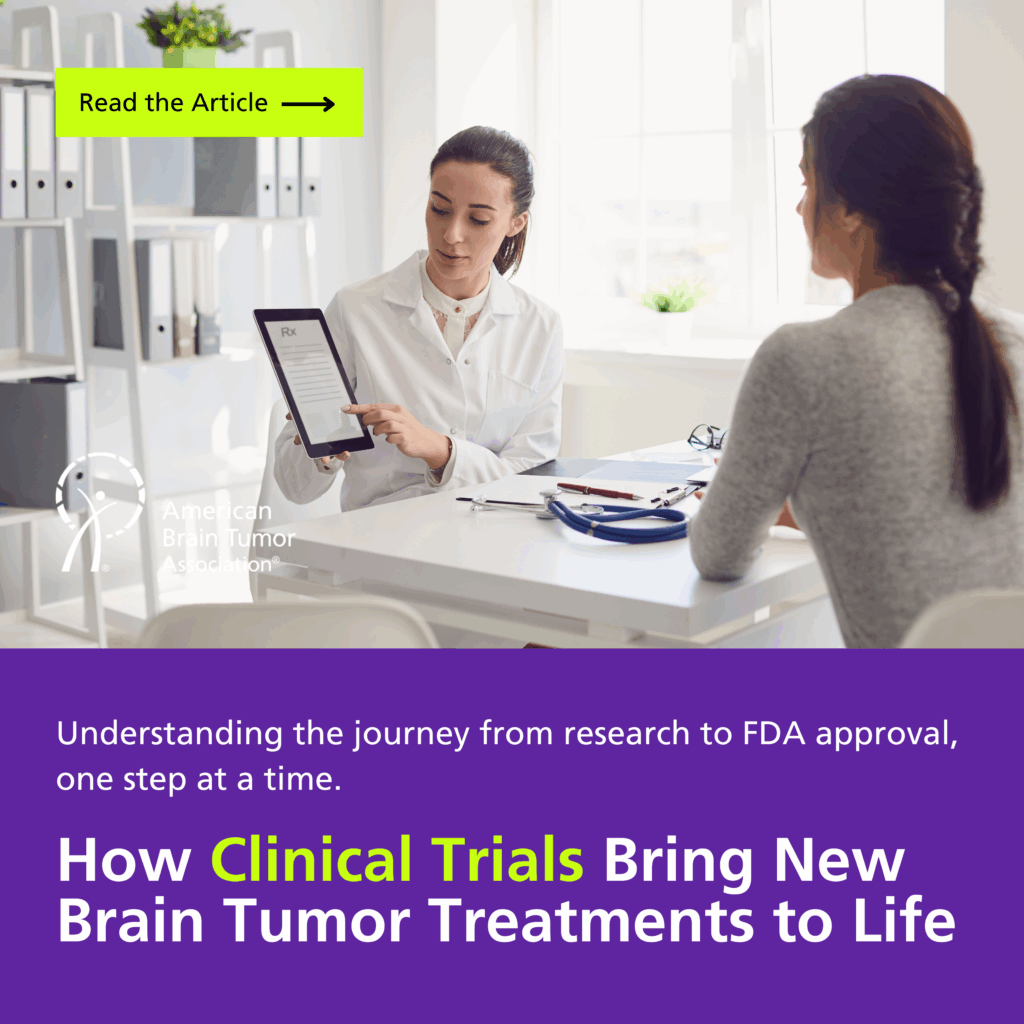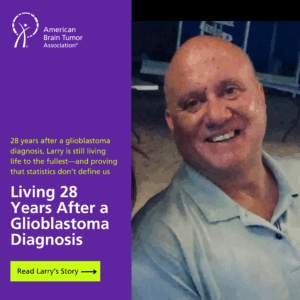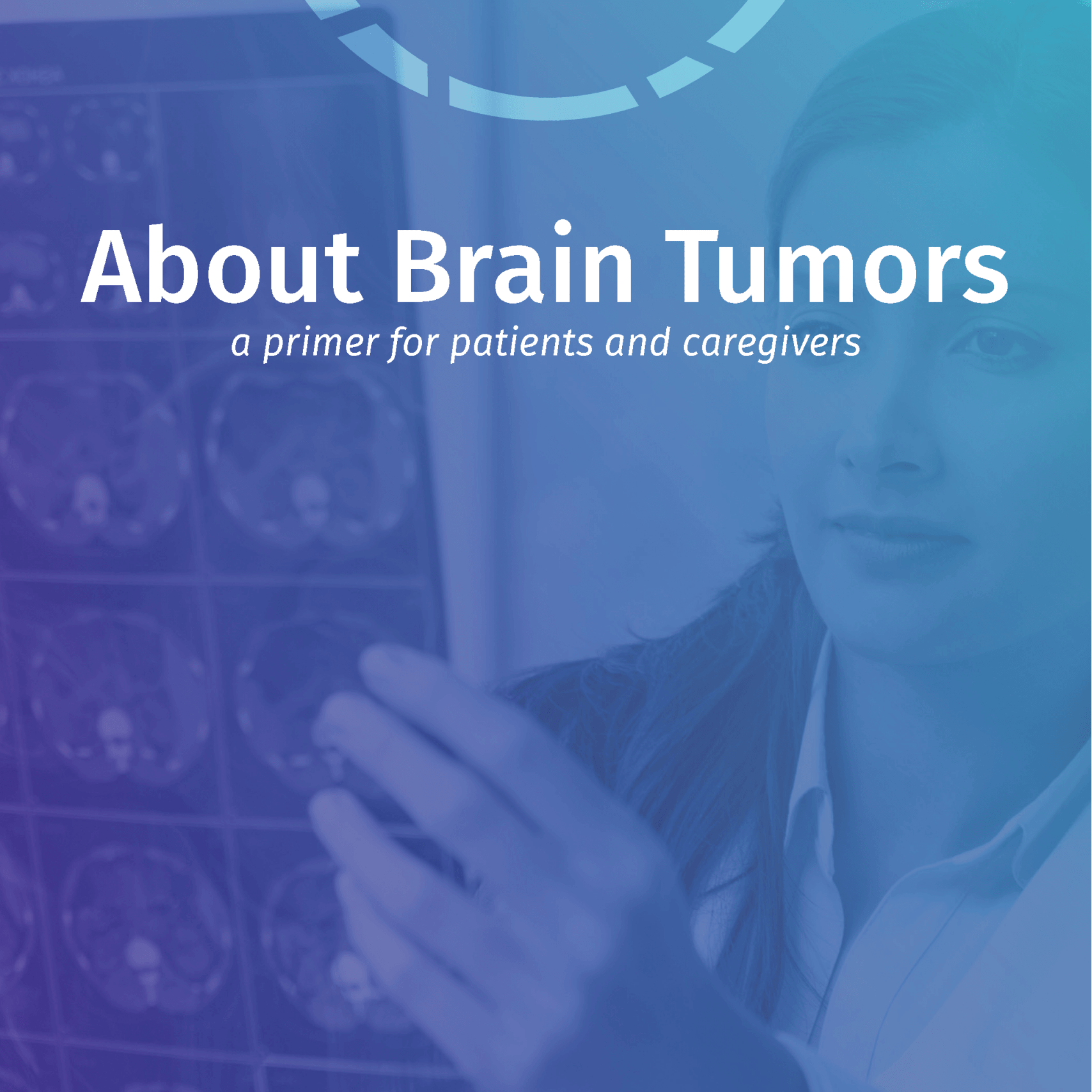Understanding the journey from research to FDA approval, one step at a time.
When you or a loved one is diagnosed with a brain tumor, one of the biggest questions is: “What treatments are available?” Clinical trials are a key part of how new treatments are discovered, tested, and eventually approved. These carefully designed studies help doctors learn what works and what doesn’t—paving the way for better care and more hope.
One recent example is the drug vorasidenib, which was approved to treat some low-grade brain tumors with a specific gene mutation. However, before it could help patients, it had to undergo a lengthy, detailed clinical trial process. Here’s what that journey looked like—and why it matters for patients and families.
The Start of Something New
Before any new treatment begins, scientists spend years researching how tumors grow and what makes them different from healthy tissue. In this case, a 2008 ABTA Discovery Grant recipient, Dr. Will Parsons, discovered that about 12% of glioblastoma tumors had a mutation in a gene called IDH1 or IDH2. This foundational research marked the starting point for what would become a transformative advancement in brain tumor treatment: the development and eventual FDA approval of the IDH inhibitor vorasidenib.
After Dr. Parsons’ discovery of IDH mutations, researchers began determining how these mutations affect brain tumors. They found IDH mutations caused the accumulation of a chemical called 2-HG. Following this, researchers developed an inhibitor to block the accumulation of 2-HG that then underwent rigorous testing through clinical trials to make sure it was safe and effective for brain tumor patients.
What Are Clinical Trials?
Clinical trials are studies that test new treatments in real people. They help doctors find out if a drug is safe, how well it works, and what side effects it may cause.
There are three main phases of clinical trials:
Phase 1:
- Tests a small group of people (usually under 30)
- Focuses on safety and the right dose
- Helps identify side effects and how the drug moves through the body
Phase 2:
- Involves more patients (usually 20-80)
- Looks at whether the drug is helping control tumor growth
- Begins to measure effectiveness in addition to safety
Phase 3:
- Compares the new drug to a placebo or standard treatment
- Includes hundreds to thousands of people
- Helps determine if the drug should be approved for everyone
Each step builds on the last, and it can take years to go from Phase 1 to final approval.
Vorasidenib’s Clinical Trial Journey
In early trials, vorasidenib showed promise by lowering levels of the chemical 2-HG in the brain. Phase 1 studies helped researchers determine the optimal dose—one that worked effectively without causing too many side effects.
Once the dose was set, the drug moved to Phase 2, where it was tested in more patients. In some cases, patients were given the drug before planned surgery so doctors could analyze their tumors afterward. This showed that the drug was reaching the tumor and doing what it was designed to do.
Next came the big Phase 3 trial, called the INDIGO study. In this study, people with IDH-mutant grade 2 gliomas were randomly given either vorasidenib or a placebo. They had regular MRIs, and if the tumor grew, the study team could “unblind” the results to see who was getting which treatment.
The results were clear: patients who received vorasidenib had a much longer time before their tumor grew again. This measurement, —called progression-free survival, —is a key sign that a treatment is working. The difference was so strong that the drug was submitted to the FDA for approval.
What Happens After a Trial?
After a successful trial, all the research data is packaged and sent to the U.S. Food and Drug Administration (FDA). The FDA reviews everything—from lab studies to patient safety reports—and decides if the drug is safe and effective.
If approved, the drug becomes available to the public. But the process doesn’t stop there. Doctors, patients, and researchers continue to monitor how the drug works in real life. They report any new side effects and look for ways to make the treatment even better.
Why Basic Research and Clinical Trials Matter
Funding basic research is critical to unlocking discoveries that can ultimately transform patient care. The discovery of IDH mutations and creation of vorasidenib underscores why sustained investment in basic science is vital for advancing long-term progress and hope in the brain tumor community.
Not every patient will qualify for a clinical trial. But these studies offer hope for better treatments—not just for one person, but for the entire brain tumor community.
Here’s why clinical trials are important:
- They test promising new treatments in real patients.
- They help doctors find safer, more effective ways to treat tumors.
- They offer early access to new drugs that may not be available yet.
- They improve the future of care for all patients.
How to Get Involved
If you’re interested in a clinical trial, start by talking to your medical team about options that match your tumor type and treatment history. Then, explore the new ABTA Clinical Trial Finder. This easy-to-use tool helps you discover brain tumor clinical trials —no medical jargon, no complex searches.
A Brighter Future, One Trial at a Time
Vorasidenib’s journey from lab discovery to FDA approval shows how powerful basic research and clinical trials can be. Thanks to years of careful research and patient participation, there’s now a new treatment option available for people with certain brain tumors.
Every clinical trial is a step forward—and every patient who joins is helping light the way.










